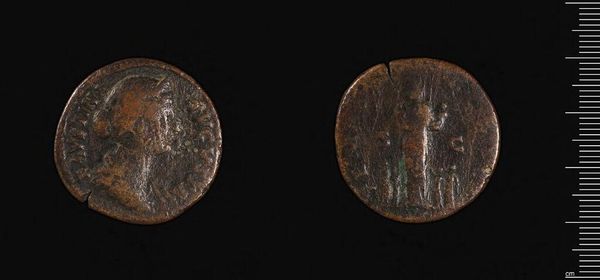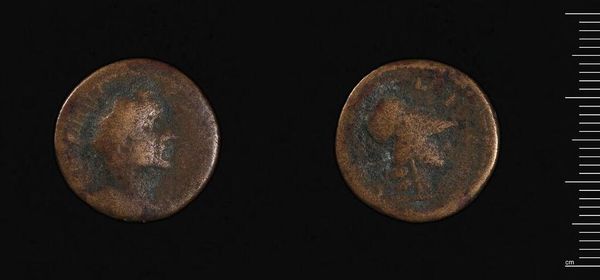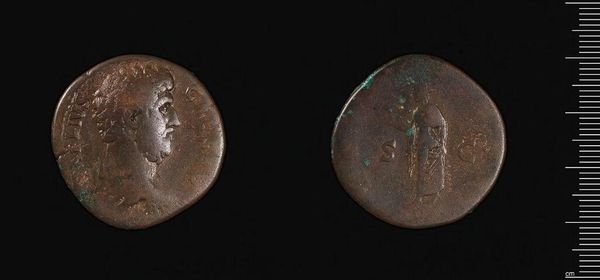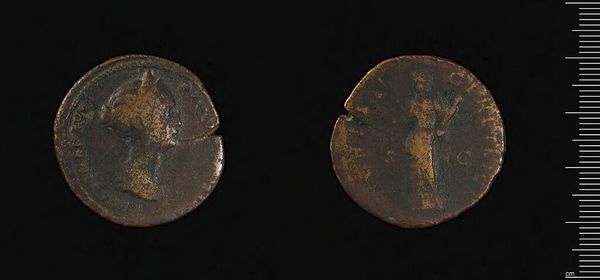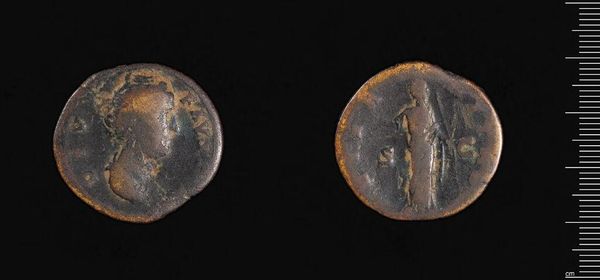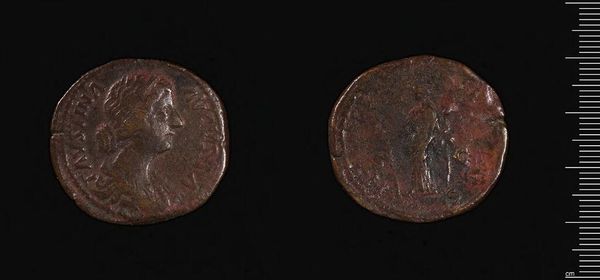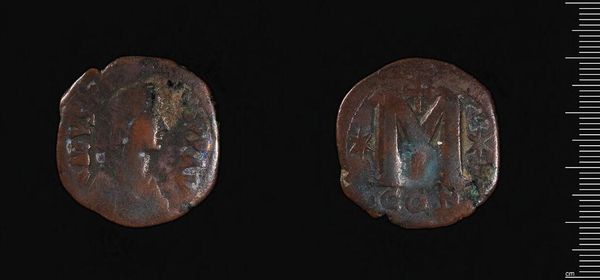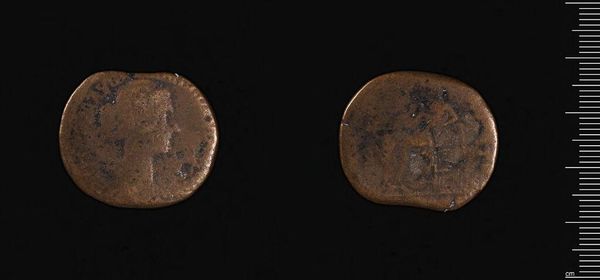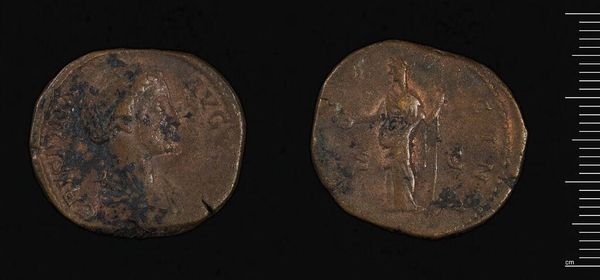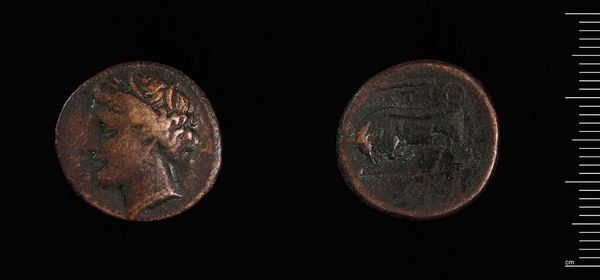
Dimensions: 24.34 g
Copyright: CC0 1.0
Curator: What strikes me immediately about this sestertius of Faustina II is its intimate scale. The portrait feels like a private glimpse. Editor: Indeed. This bronze coin, now residing at the Harvard Art Museums, serves as a fascinating artifact of Roman imperial power and identity. Curator: Her image on the coin is more than just a likeness; it's an ideal. What did Faustina represent to the empire? Editor: As the wife of Marcus Aurelius, she was elevated, literally minted into a symbol of virtue, motherhood, and imperial stability at a time of political transition. The goddess figure on the reverse reinforces this idea. Curator: I find that fascinating. Each element, from her hairstyle to the inscription, carefully constructs her role and projects that to the masses. Editor: Absolutely. Currency wasn't just money; it was propaganda, a crucial medium through which the emperor and empress communicated with the people. Curator: Thinking about the journey this little coin has taken, from circulation to museum display, makes it feel deeply significant. Editor: Precisely. It's a potent reminder of how images are always embedded in power and continue to echo through time.
Comments
No comments
Be the first to comment and join the conversation on the ultimate creative platform.
